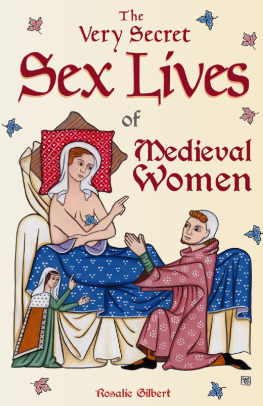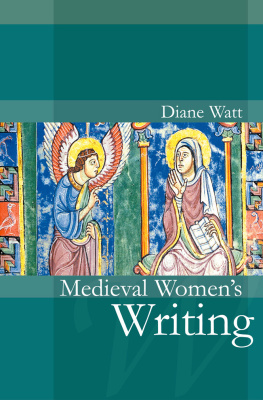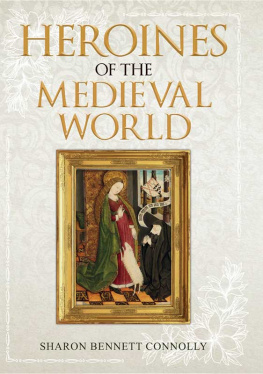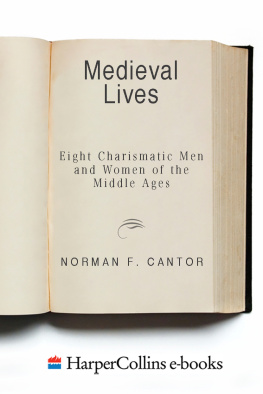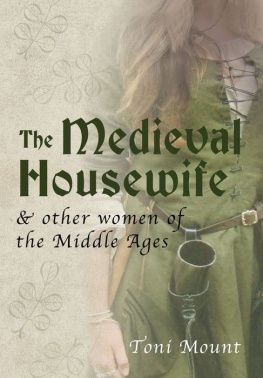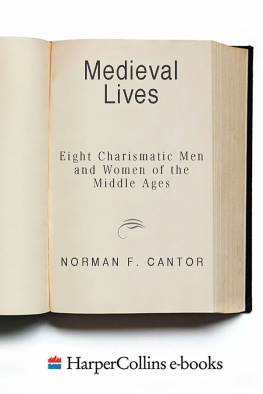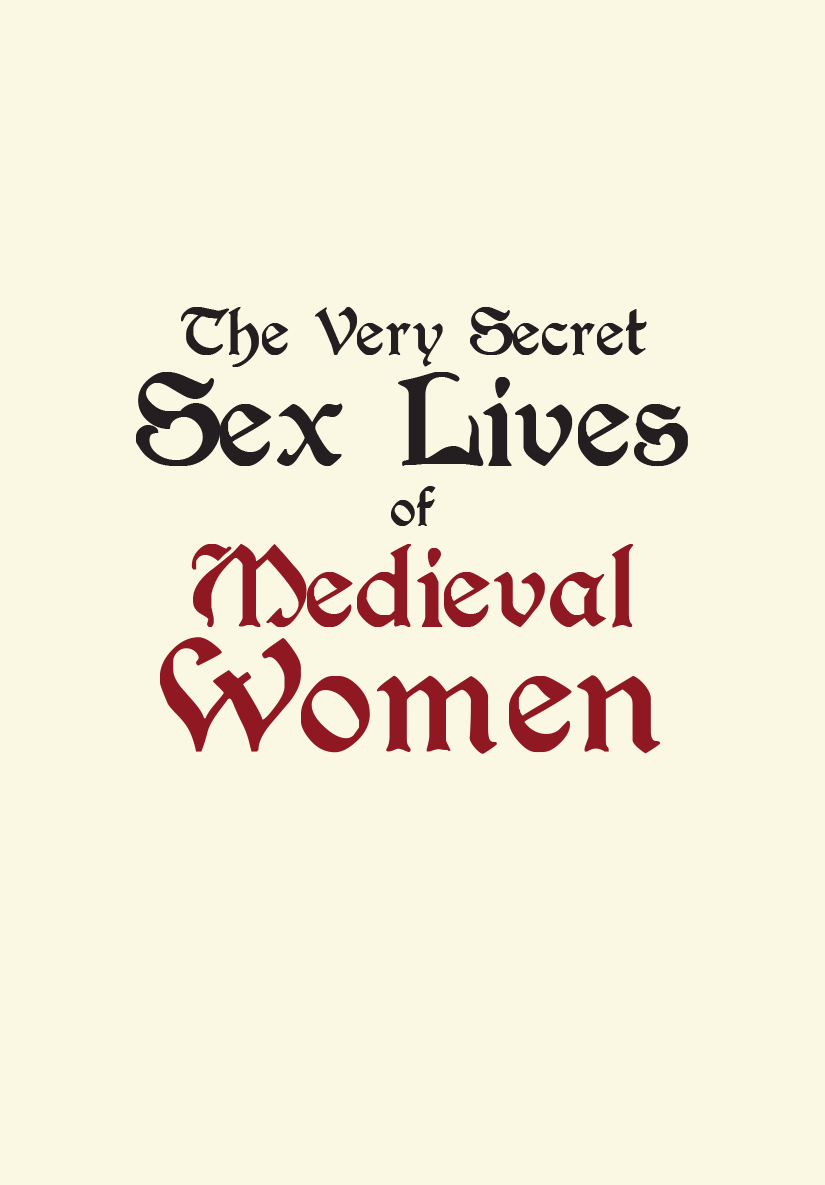

Copyright 2020 by Rosalie Gilbert
Published by Mango Publishing Group, a division of Mango Media Inc.
Front cover illustration: Tania Crossingham Illuminations & Fine Art 2019
Book Cover and Interior Design: Jermaine Lau
Mango is an active supporter of authors rights to free speech and artistic expression in their books. The purpose of copyright is to encourage authors to produce exceptional works that enrich our culture and our open society.
Uploading or distributing photos, scans or any content from this book without prior permission is theft of the authors intellectual property. Please honor the authors work as you would your own. Thank you in advance for respecting our authors rights.
For permission requests, please contact the publisher at:
Mango Publishing Group
2850 S Douglas Road, 2nd Floor
Coral Gables, FL 33134 USA
For special orders, quantity sales, course adoptions and corporate sales, please email the publisher at or +1.800.509.4887.
The Very Secret Sex Lives of Medieval Women: An Inside Look at Women and Sex in Medieval Times
LCCN: 2020933891
BISAC: BIO022000BIOGRAPHY & AUTOBIOGRAPHY / Women
Printed in the United States of America
Disclaimer
This work of literature contains many herbal recipes, preparations, and advice from medieval manuscripts which you are ill-advised to attempt at home. Seriously. Dont try them. The harm that ensues may be life-threatening and permanent. Death may come to you on swift wings.
I repeat, Do Not Try These At Home.
Except if youre trying to lure a unicorn with your virginity.
If youre doing that, feel free to keep up the good work.
For Jenny,
who is changing the roster as we speak.
#sorrynotsorry
Table of Contents

Getting Sexy Medieval-Style
We know that Medieval women had sex. We know this. Its a fact. Babies were born. They grew up and had babies of their own and, in order for that to happen, the act of procreation must have occurred. This much we do know, but have you ever wondered what sex was like for the Medieval woman?
Were women slaves to their husbands every desire? Were they secured safely and jealously in a chastity belt in his absence? Was sex a duty or could it be a pleasure? Did the Medieval woman have any say about her own body and who did or didnt get up close and personal with it at all? Ever? About any of it?
So much more than you might think.
In the modern world, we have the Victorian scholars to thank for many of the grossly misleading ideas about the women who came before us in the Medieval world. Many of the so-called facts that we think we know today can be directly attributed to them. The Victorian era was full of smug people who were quite delighted with their own society and how clever it was and concluded loudly in literature everywhere what an awful, backwards, uncultured, and uncivilised society everyone before their own had been. This flew in the face of historical evidence of Romans, Etruscans, and the Spanish Inquisition. Okay, the Inquisition was uncivilised in the respect that religious mania persecuted humans in brutal and horrendous ways, but the religious and domestic arts and science of the time period were not.
Unfortunately, no one questioned any of these Victorian ideas becausewait for itcontemporary Victorians also agreed . There was no kind of peer review process where an enquiring scholar might challenge an history authority or meekly enquire whether things were being blown out of proportion a little and looking into it properly might be a good idea. No. They had ideas about Medieval people, and they stuck to them.
The biggest problem with this is, as Hollywood found its feet and blossomed into a thriving industry, producers read a lot of books and then just ran with what they found there. They cherry-picked their favourite bits. Costumes, customs, and depictions of historical life were gleefully snatched from the pages of Victorian writers, and suddenly, what the world knew to be true about past lives was their interpretation of it.
Vikings gained horned helmets. Viking women got those coconut-shaped breast covers. Pointy princess hats called hennins , which were popular for a very, very short time, became the must-have item for every Medieval woman, regardless of what else she was wearing. Fur rugs were draped over absolutely everything, and castle walls were unpainted stones. Peasants were dressed in clothing which was poorly sewn and ill-fitting, and everyone wore brown. Even the black, rotting teeth we see in movies is inaccurate, not coming until the widespread use of sugar, and is not indicative of general hygiene standards in the Middle Ages.
Likewise, Medieval women suffered at the hands of the Victorian imaginings. Women couldnt read. They had no say about anything and couldnt own property or run businesses. They didnt wear makeup or underpants. And chastity belts were insisted upon. It was really quite unfair.
In fact, Medieval women had tweezers and shaped their eyebrows. They cared about their appearance. Poor women had very little, but because they had little, it was made to last and was less disposable than our cheap chain store clothing of today. Hinting that clothing which was hand spun and handwoven was also poorly made is insulting and incorrect. A woman who had learned to sew from a very early age was extremely good at it by the time she was required to produce clothing for her family.
The intimate lives of Medieval women were as complex and as complicated as ours today, with very little being clear cut and many of the issues relating to sexual relationships having distinctly blurry edges. Women then, as now, loved and lost, hoped and schemed, laughed and cried, were lifted up and cast down. They were hopeful and lovelorn. Some were chaste and some were lusty. Some had sex thrust unwillingly upon them and had to deal with the consequences. Others made aphrodisiacs and dressed for success.
Sometimes having sex was complicated. Sometimes not having sex was even more so. In spite of the hundreds of years which separate the very secret sex lives of Medieval women and the sex lives of modern women, many similarities remain. Only the actual women have changed. These are true stories of over one hundred actual Medieval women.
Lets go and meet them now.

Unlike today, a Medieval womans status in society wasnt gauged by her age or by her level of education, profession, or her career successes, but by her sexual status. She was either:
, a virgin (young, unmarried, not allowed to have sex)
, a wife (married, allowed to have sex)
, a widow (ex-married, not allowed to have sex)
, a strumpette (single, having or suspected of having sex)
and her rights and obligations in society were hugely dependant on this.
An unmarried woman, generally speaking, was a dependant in her fathers household and was pretty much nothing more than a marriageable commodity who was to enrich someone elses family in the future. She might have some education and skills, but, on the whole, she was seen as not having found her place in society just yet.
A married woman was accorded respect as a wife and mother, manager of a household, and a person who might also work in her husbands business. She might have a trade. She was the wife of somebody, and everything she did, good or bad, reflected on him.
Next page
